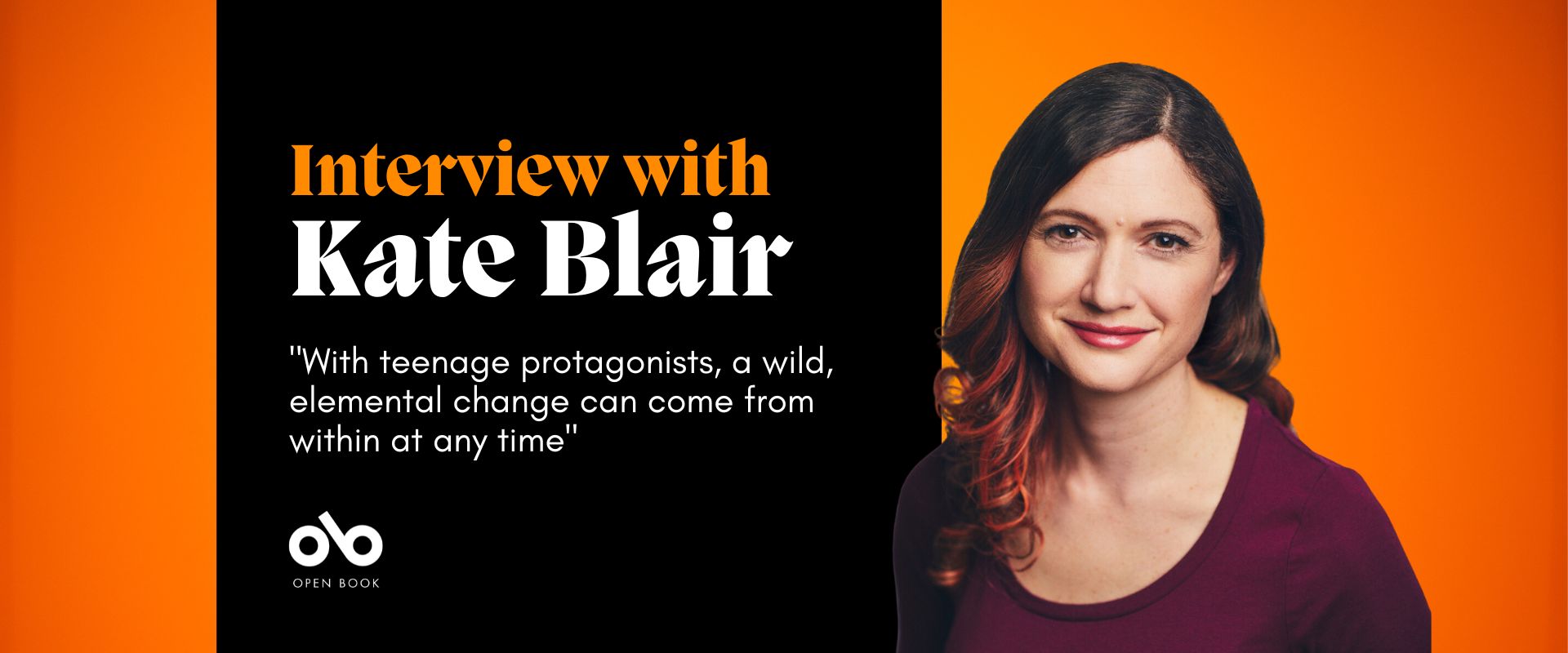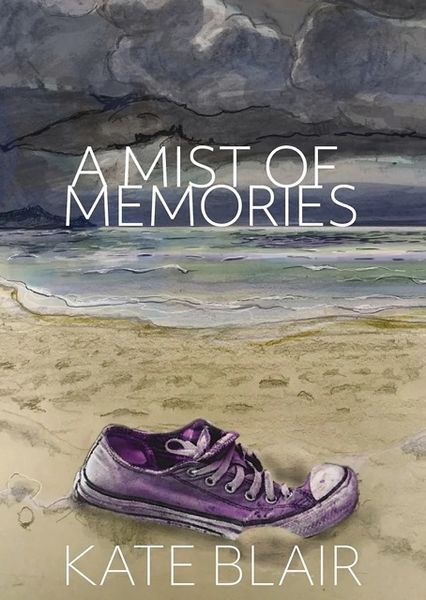"Reality is Messier...It’s Vital that Books Reflect That" Kate Blair on Crafting Honest Young Adult Literature
It's often been said that every good story opens in the same way: when something changes. And one of the most enduring and universal story structures is that of "a stranger arrived".
Kate Blair puts her own unique twist on this archetype in her newest young adult novel, A Mist of Memories (DCB). Gothic and atmospheric, it opens when Ajay arrives on the shore of a mysterious island, searching for the girl he has a crush on, who disappeared without a trace.
On the island, Charlotte, whose family are the tourist island's only full-time inhabitants, is coping with her own kind of disappearance: after an accident on the island's misty cliffs, her memory has been unreliable. She can hardly remember her life before the incident and hours of time seem to vanish.
When Ajay and Charlotte come together and discover how their seemingly unrelated mysteries are intertwined, they begin a race against the clock to uncover the island's secrets before its threats consume them.
Blair's deliciously tense writing and plotting make for a thoughtful exploration of grief and memory that sweeps readers along to the final twists, and Ajay and Charlotte fast become complex characters to root for. We're speaking with Kate about the novel today as part of our Bright Young Things young adult literature interview series. She tells us about why she loves writing teen protagonists in particular, about the surreal experience of having an autobiographical detail in an early draft deemed unrealistic, and why she rejects the idea that young adult novels should "be written as how-to guides".
Open Book:
Tell us about your new book and how it came to be.
Kate Blair:
My new book is a modern gothic thriller about a forgotten island wreathed in strange mists, the girl who lives there with her family and the boy who washes up on their shore, looking for his lost crush. It’s the result of a number of ideas I’ve been playing with for years, as well as thoughts on gaslighting, grief, and how memories shape, hurt and heal us.
OB:
What, in your opinion, is unique about writing for young adults? What are some of the pleasures and challenges?
KB:
I love writing about young adults because it’s an age where small things have huge consequences; where a life can branch out in any direction. It’s a time when extreme decisions can be made, due to impulsiveness or excitement, the kind of choices that can send your life spinning in an amazing new direction or off the tracks completely. Older adults tend to make much more cautious decisions, so as protagonists they are more predictable and harder to shift from their set course. Frankly, they can be boring. With teenage protagonists, a wild, elemental change can come from within at any time. That makes them so much more fascinating to write about.
OB:
What was the strangest or most memorable moment or experience during the writing process for you?
Your CanLit News
Subscribe to Open Book’s newsletter to get local book events, literary content, writing tips, and more in your inbox
KB:
In this novel, I have a character who gets into a damaging relationship. I based some of the conversations and events on my own life, and when I sent an early draft to a friend for feedback, she told me to take out one particular interaction, as it was ‘too much of a red flag’ and the character would be too smart to fall for it. I took it out, and never told her that it was a real thing, and I did fall for it.
I was apparently more of a sucker than my character.
OB:
Do you feel like there are any misconceptions about writing for teens and young adults? What do you wish people knew about what you do?
KB:
One misconception about writing for teens is that YA protagonists should be perfect, or that stories for teens should basically be written as how-to guides. When books are read this way, characters are condemned for mistakes, even if they later learn how wrong they are and try to make amends. They are judged for not solving their problems in the ‘right’ way. But if we want YA stories to reflect reality at all, they can’t be that simplistic. They need to be filled with flawed people who make mistakes and struggle to find their own imperfect way out.
When we criticize a story that contains anything other than the ideal way of, for example, escaping an abusive relationship, the implication is that our readers who escape an abusive relationship any other way are doing it wrong. And when we refuse to forgive a character in a story who makes a genuine mistake, we’re telling readers they can never be forgiven for their own mistakes. Reality is a lot messier than the best-case scenario, and it’s vital that books reflect that, as well as the ideal.
OB:
How, if at all, does social media feature in your writing process?
KB:
The main role of social media in my writing process is a confusing mixture of being delighted by my friends’ successes and feeling totally inadequate as a result.
OB:
What's your favourite part of the life cycle of a book? The inspiration, writing the first draft, revision, the editorial relationship, promotion and discussing the book, or something else altogether? What's the toughest part?
KB:
I usually have several ideas at any time, and the hardest part of the inspiration stage is choosing the one that I love enough to work with for years. There’s always a sense of urgency at that point, to capture the spark, which carries me along at the beginning of a first draft. The toughest part kicks in about a third of the way in. My first drafts are terrible vomit drafts and by that point I hate everything I’ve written and I still have so much to plough through before I can even begin to start to work on a draft that doesn’t completely suck. I always want to give up.
My favourite part is around the third draft, by which time I usually have enough of the book in place so I don’t have to try to keep the whole thing in my head. But there’s still enough leeway then that I occasionally have wonderful surprise ideas that add new and unexpected aspects that deepen the story, or pull together a section that wasn’t quite working. Those are deeply satisfying.
OB:
What are you working on now?
KB:
I’m working on a historical/contemporary murder mystery exploring the line between compromise and complicity. It’s about Keira, a 17-year-old interning at a local museum at the site of a former prisoner-of-war camp in Canada. Her summer project is to investigate the mystery of Erich Stein, a German POW inexplicably found dead just outside the camp fence, almost eighty years ago. A second point of view comes from Erich Stein, illustrating the events that lead to his death as he goes from trying to be a ‘good German’ to being exposed to the reality of the war he’s been a part of.
Keira’s investigation is complicated by the apparent accidental death of a fellow intern, which leads her to unearth connections between the POW’s choices in the past and the secrets of the town in the present. She finds herself drawn into her own moral quagmire as her investigations and need for a university scholarship mean getting closer to a powerful local politician leading a crusade to ban LGBTQ books at the town’s library.
_____________________________________________________
Kate Blair is a native of Hayling Island, UK, and is now a Canadian citizen living in Toronto. Her first novel, Transferral, was a finalist for the Manitoba Young Readers Choice Award and the Saskatchewan Young Readers Choice Snow Willow Award, and was a Starred Selection of the Canadian Children's Book Centre's Best Books for Kids and Teens.





